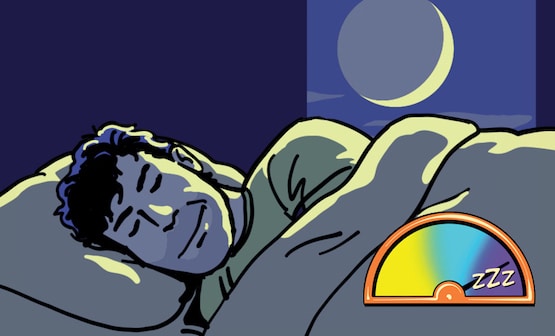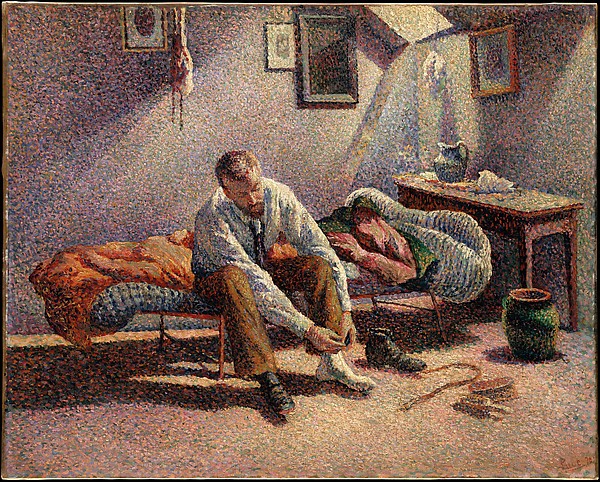Editor’s Note: This is a guest article from Joey Stone, MD.
Poop…hehe.
So that is out of the way. Everybody poops.
For some strange reason the act of having a bowel movement becomes taboo in the middle of our life only to return to prominence in our later years: Any parent will testify to the frequency and importance of their baby’s poop schedule. In childhood and adolescence, it is prime comedy and a common source of conversation and entertainment. Then, it disappears. We begin to speak in polite euphemisms: “my morning meeting,” “the daily constitutional,” “I need to ‘make a call'” or “read a magazine” — pick your favorite. All because we are embarrassed by something everyone does every day.
Inevitably, with wisdom, we will respect the process and realize the importance of waste removal. As my octogenarian patient once put it, “I pooped at 5:57am this morning, and it was a good one.” It becomes an obvious, necessary, and important part of the day.
We make choices in life. We choose to better ourselves. We read to learn, exercise to gain muscle, or eat healthy to lose weight. But little thought or effort goes into our poop and making it healthier. It takes work, to not work, to have a bowel movement. Input must be considered in order to obtain the desired output.
Today we’ll discuss how that output happens, and how to tweak the input in order to achieve healthy, seamless bowel movements. Here’s how to become a happily “regular” guy.
The Pooping Process, From Table to Toilet
A bowel movement is a journey, not a destination, so let’s follow it all along the way, from your dinner plate, to the porcelain throne.
Mouth. It all begins with mastication, the mechanical chewing and grinding of food by the teeth. Mastication increases the surface area of the food so the impact of the various digestive processes throughout the bowel transit are magnified. Enzymes are added along the way to assist in this deconstruction process.
Digestion actually begins in the mouth. Salivary enzymes present in the mouth, such as amylase, begin splitting carbohydrates into simple sugars. Chewed, swallowed food — known as food bolus — migrates from the mouth to the stomach through the esophagus.
Stomach. As the food bolus enters the gastric cavity (aka stomach), gastric acids and enzymes hasten the deconstruction into usable, absorbable parts. The mixing motions of the stomach distribute the violent mixture of gastric acid and enzymes over the ingested food. The stomach begins absorption of simple molecules such as amino acids, water, ethanol (booze), and caffeine. The acidic environment and structure of these molecules allow them all to rapidly shift into the blood stream.
Small Intestine. The partially digested food, now referred to as chyme, exits the stomach and begins passage through the small intestines. This leg of the journey is actually the longest. (The small intestine, while being the longest portion, is called “small” due to its caliber.)
The trip from the stomach to the exit begins with the addition of digestive enzymes early on, and nutrient extraction tapers off as the material progresses. The liver and pancreas add to the digestive milieu as the chyme exits the stomach into the duodenum (the first of the small intestine’s three sections). The composition of the material becomes much more stool-like and much less food-like as it advances. The progression is propelled along by a function know as peristalsis, a wave-like contraction of the bowel. Visualize a snake engulfing a rat whole.
The majority of the nutrient harvest occurs here in the small intestine. Its lining is equipped to transport molecules and ions from the inside of the bowel into the bloodstream. Once in the blood, nutrients are whisked off to places of immediate use and storage. The brain and muscles love glucose (sugar), and any that isn’t immediately utilized is collected as glycogen (ready-to-use sugar in the liver and muscle) and fat (long-term storage), to be released in times of need. Once glucose is converted into fat storage it cannot be returned to the glucose form, making it more cumbersome to use.
Colon. The large intestine, also known as the colon, begins the final leg of the journey and functions to reclaim a significant percentage of water and salt during this step. Approximately 1 to 2 liters of water a day are reabsorbed in the colon.
Hundreds of varieties of bacteria call the colon home, fermenting undigested material into useful sugar, fatty acids, and vitamins. The lining of the colon is very efficient at dehydrating its contents. As this material remains here, it continues to desiccate into progressively harder, drier stool. This dehydrating efficiency becomes a double-edged sword. It is useful to maintain whole body hydration, but detrimental to the ease of passing water-poor poo. This consequently begins the progression into the condition known as constipation.
Conversely, when the absorptive capacity of the colon and even the small bowel are undermined, the result is diarrhea. This occurs when the waste resists water loss (lactose intolerance and some forms of laxatives) or when the functionality of the bowel lining is compromised (food poisoning and infection).
Rectum and Anus. The gatekeeper of the colon, the anorectum is the final vault prior to defecation (pooping). As the rectum fills, increasing pressure within is sensed by the local nerves which trigger the sensation to defecate. If the rectum is not emptied at this time, its contents are returned to the colon where they again are exposed to its dehydrating lining, moving closer into the dreaded constipation spectrum.
The rectum naturally forms an S-shaped kink equipped with an internal and external sphincter to protect against the undesired passage of material. Only with the concerted relaxation of the sphincter and straightening of the rectum may stool exit. These safety mechanisms may be overridden by excessively liquid waste. Or, in the South Park universe, whenever someone dies.
The feces that emerge are the gastrointestinal end product of the process explained above. Your poop consists largely of the parts of what you ate and drank which could not be used by the body — water and a small remainder of mucus, protein, fat, and indigestible material.
Once your stool leaves the body, it ends up in the toilet (or a hole in the ground if you’re in a more primitive or wild environment), and is (hopefully) flushed away. If your poop decides to stubbornly stick around, then this guide is for you.
An Ideal Daily Bowel Movement
If all goes well in your food’s journey from entrance to exit, you’ll have a good bowel movement. A high-quality bowel movement is not only a function of the feces’ consistency but also its regularity and ease.
Human feces vary in consistency along a spectrum beginning with hard, dry, and pellet-like through to soft, semi-solid paste, and ending with nearly all liquid. The ideal lies in the middle. The same can be said for color; too light-colored or a black/very dark brown color are often indicative of illness or disease.
Bowel movements usually occur on a daily basis (although this can vary from person to person). They should have dependable timing, successfully eliminate the waste accumulated since the last movement, and happen painlessly.
Quality In for Quality Out
Now that you understand the process your body goes through to arrive at the output of #2, and what that output should ideally look like, you can start intentionally influencing the process in a positive direction by modifying your body’s input.
Water. Just like us, stool is about 75% water. As water intake declines, so will water output. Drinking adequate daily allotments of water offers numerous benefits, improved stool passage being but one. The Institute of Medicine recommends daily water consumption of 3.7L for men, approximately 15 glasses, far exceeding the commonly taught 8 glasses per day. Keep in mind that number is for an 8oz glass, probably on the small end for most people, who are drinking from larger glasses or water bottles throughout the day. Also, understand that a good portion of your daily water intake is not drunk but consumed as food. A diet rich in fruit and vegetables is naturally full of water.
No need to keep a daily water diary — simply drink when thirsty, with all meals, and after any significant water loss, such as a sweaty workout. Avoid excessive quantities of caffeine, alcohol, and sugar. These all act to waste water from the body through various mechanisms.
Exercise. Activity strongly influences an individual’s metabolism. Metabolism is the summation of the chemical processes in a living organism employed to create and utilize energy. Ideally, an individual’s metabolism is running efficiently with negligible excess on either the input or output end of the equation. It’s recommended that people get a minimum of 150 minutes of aerobic activity per week, approximately 20 minutes a day. This daily activity allows the body to regulate hunger, energy storage, and resource utilization, thus having a dramatic impact on waste production and elimination.
The mechanism of exercise on digestion is incompletely understood. Many theories exist, but common knowledge believes it to be a combination of multiple factors. Alterations in neuroendocrine control (nerve and hormonal input) and mechanical bouncing seem to be the greatest factors.
Mechanical bouncing — jumping, running, getting things literally moving — takes place during the episode of activity, whereas changes in hormonal and nervous system communication may be greatest in periods of rest. The portion of our nervous system tasked with all the automatic, housekeeping functions is divided into “fight and flight” and “rest and digest.” Routine, habitual exercise influences both, allowing each to operate maximally.
Essentially, run and jump to bounce the poop through and rest for the body to know it’s cool to poop now.
Fiber. The typical American consumes barely 50% of the recommended daily allotment of fiber. Dietary fiber is broken into two groups: soluble (dissolves in water) and insoluble (remains solid in water). Both kinds are important; soluble combines with water, forming a gel, which slows absorption and digestion (in a good way), while insoluble aids passage through the stomach and small bowel.
The benefits of fiber are great and many. If one wished to find a silver bullet to improve diet, seek no longer, it’s fiber. It is only found in natural, nutritionally dense foods. It provides larger food volumes for increasing satiety (the sensation of fullness) while minimizing calorie consumption. Fiber holds carbohydrates through transit of the stomach and bowels, limiting glucose absorption, thus lessening blood sugar spikes. (The fibrous mass essentially hides the simple sugars from the absorptive bowel wall.)
Fiber also limits low-density lipid (LDL) absorption and re-absorption, benefiting one’s lipid profile (cholesterol). Fiber adds bulk to stool and speeds food transit, aiding regularity and ease of defecation. The bulked up stool enables the peristaltic movements of the bowel to grab hold and push forward. Also, as discussed, stool content is 75% water, and fiber holds onto this water. A bulky, fibrous stool thus remains soft and pliable, facilitating passage through the winding bowels as opposed to firm, dry stool.
Fiber is plant-derived or may be supplemental. Both are good sources, but plants have additional nutritional advantages. Green vegetables, whole grains, beans, and nuts pack in some of the greatest quantities of fiber. The Academy of Nutrition and Dietetics recommends 20-35 grams of fiber per day for the typical adult, although as noted above, most consume a mere 12-18g per day.
Adding fiber to your diet needs some care. One of the eventual benefits is in providing rich substrate for intestinal flora (bacteria) to live and grow. Bacteria, when presented with additional resources, multiply rapidly, which can produce excess gas and flatus (farts) through fermentation. Gradual increases in daily fiber are key, as opposed to abruptly providing additional fodder for bacterial growth. This uncomfortable negative effect may be avoided by slowly adding fiber to your diet and spacing it throughout the day. Be considerate of your abdominal comfort and the breathing comfort of your friends and family; pace yourself when ramping up.
Bacteria. Bacteria aid digestion by breaking apart the consumed food/drink into useful pieces — fermenting fiber into useful carbohydrates, producing essential vitamins, etc. The utility of adding supplemental probiotics remains controversial. The FDA has threatened action against manufacturers claiming health benefits of probiotics, as scientific evidence for these claims is yet lacking. That said, we may find that science will bear out these claims eventually. We are indeed learning that there exists a strong mutualistic relationship between us and the enormous bacterial cloud within us.
Consuming foods which naturally contain bacteria seems to make the most sense for getting the full benefits of probiotics. By eating such foods, we add bacteria which are specialized to digest said foods. For example, yogurt contains bacteria, because without bacteria it is just milk. The lactobacillus (specific bacteria found in yogurt), and others, change the milk sugar (lactose) into lactic acid, creating its distinctive texture and flavor. Sauerkraut, pickles, and all other fermented foods exist because bacteria have started the digestive process for us. Think of it as sharing lunch with billions of tiny friends.
There you have it! Act when nature calls. Remember to add increasing amounts of fiber slowly throughout the day, some with each meal. Drink plenty of plain ol’ water. Move around more. Then, maybe have a yogurt or kimchi snack. By taking these steps, you’ll come to increasingly enjoy your “morning meetings” and find that life is good when you’re a “regular” guy.
_______________________
Written by Dr. Joey Stone








